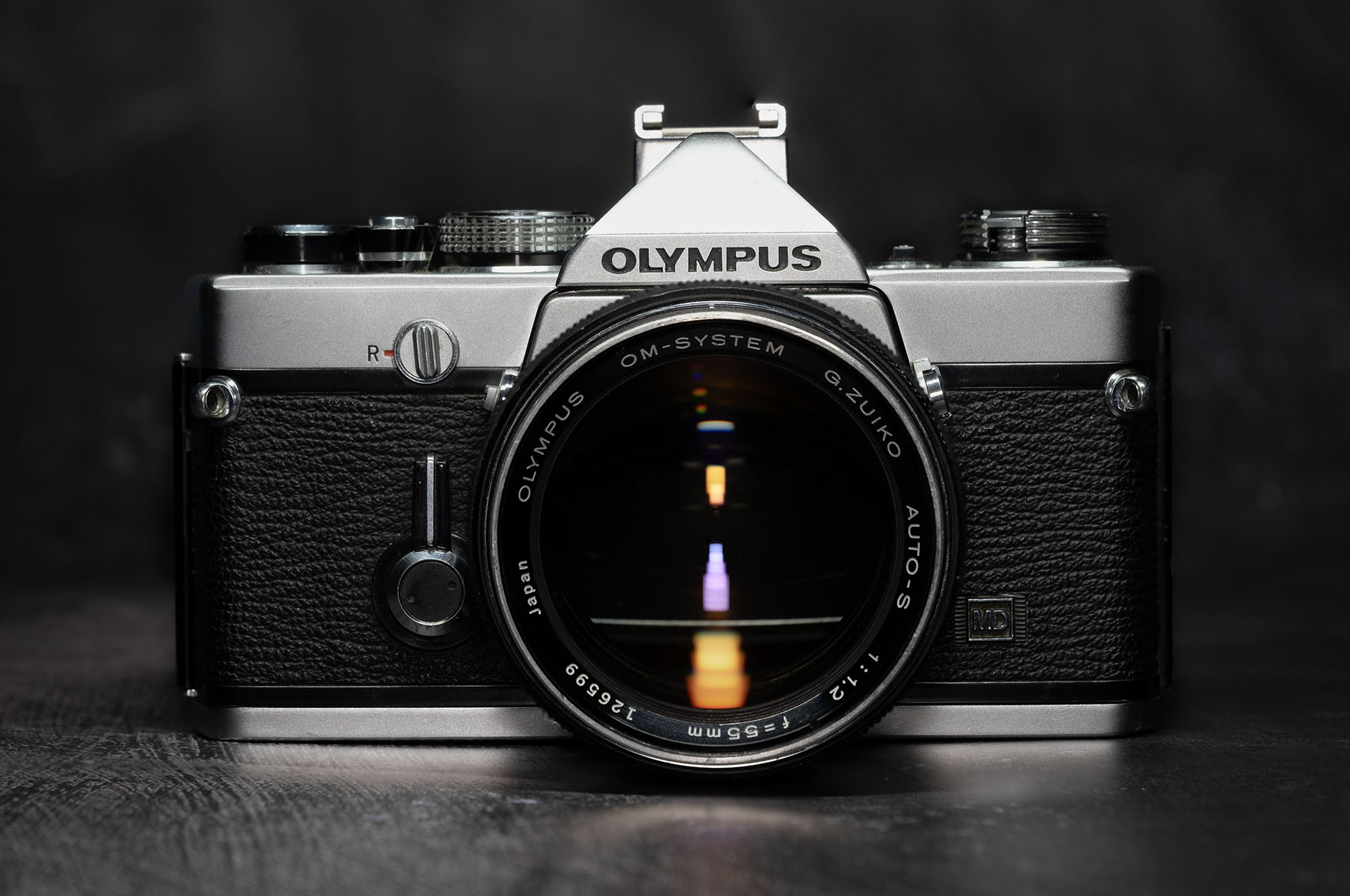For some reason, I had never been seriously exposed to Olympus gear during the decade I was photographing commercially. Nikon and Canon dominated the pro scene, with few others putting up any real competition. This was not necessarily due to a lack of quality or capability.
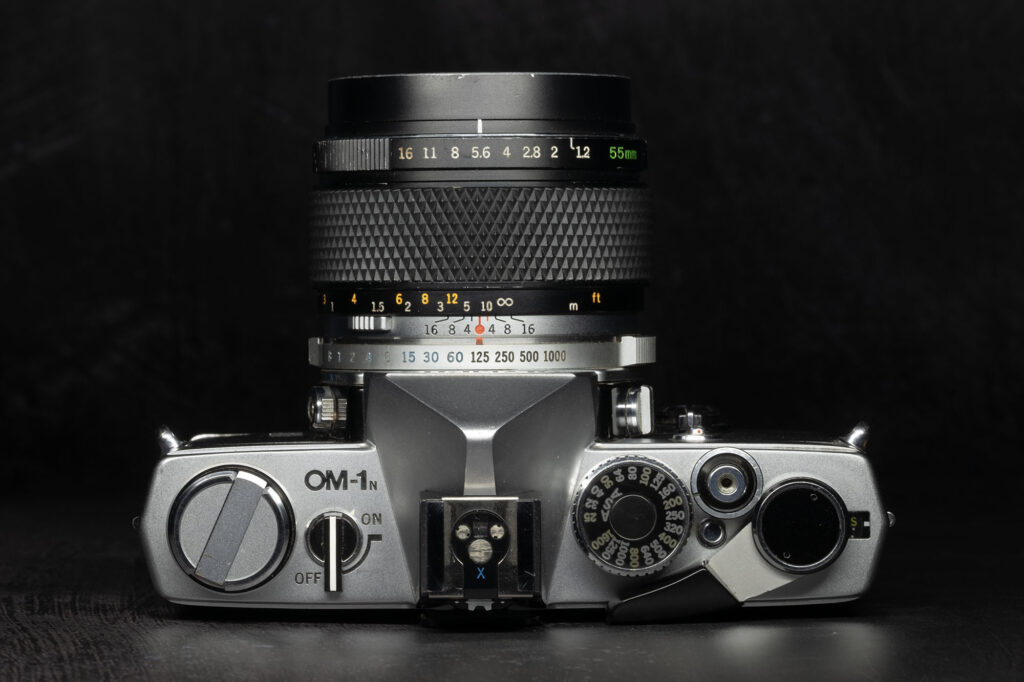
Since reaching “critical mass” in the vintage camera arena, several Olympus SLR kits have dropped in my lap. They have included the OM-1, OM-2n, OM-2s, OM-4, and a few OM-10s. When I acquire new gear, I like to research the place in photographic history occupied by that particular camera or lens.

Discussions of photographic history will inevitably touch on the highlights of design evolution. Those highlights along the timeline often represent evolutionary leaps forward in camera design. Such a leap occurred when Yoshihisa Maitani and his team designed the OM-1.
Nikon’s F had famously unhorsed Leica as the dominant professional camera. However, the Nikon F was large and heavy, particularly with a metered prism. I suppose this was the acceptable compromise in exchange for the versatility of the modular system. Maitani may have seen this as a challenge and an opportunity.
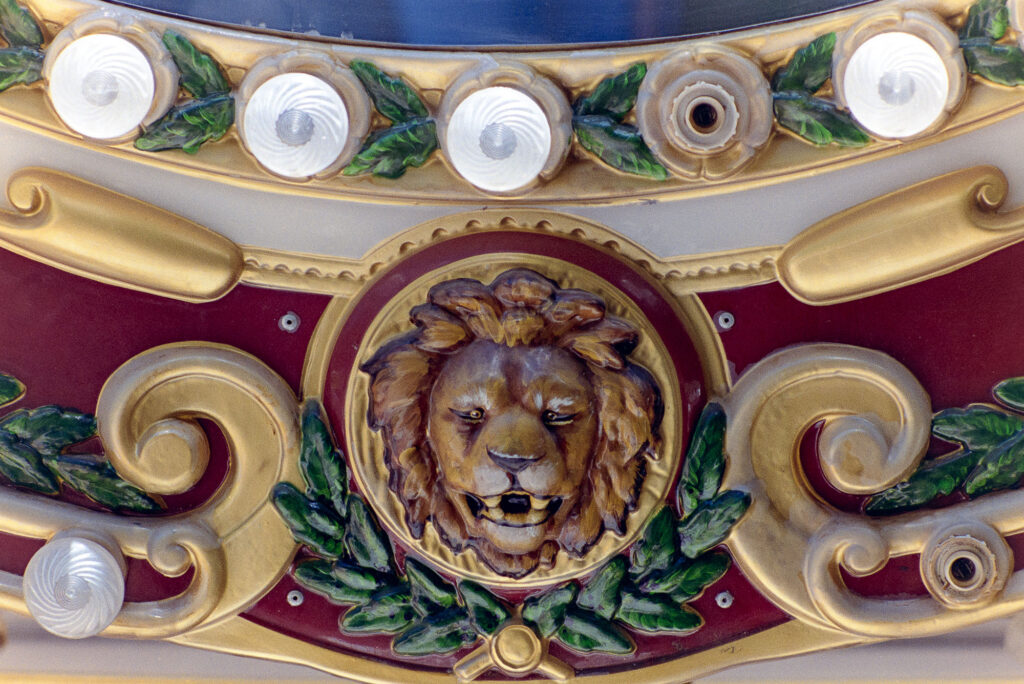
Maitani set out to design a camera 20 percent smaller and 50 percent lighter than the Nikon. Having set strict size constraints, Maitani valiantly fought off the engineers’ requests for more latitude. The final result exceeded those constraints by only one millimeter. The OM-1 was born in 1972.

Maitani also paid close attention to apparent shortcomings in the existing camera offerings. One such concern was vibration resulting from mirror slap. He designed a system in which an air-filled cylinder is used as a damper, resulting in less vibration and a quieter action. Moreover, multiple cushions and shock absorbers reduced vibrations in other mechanical systems.
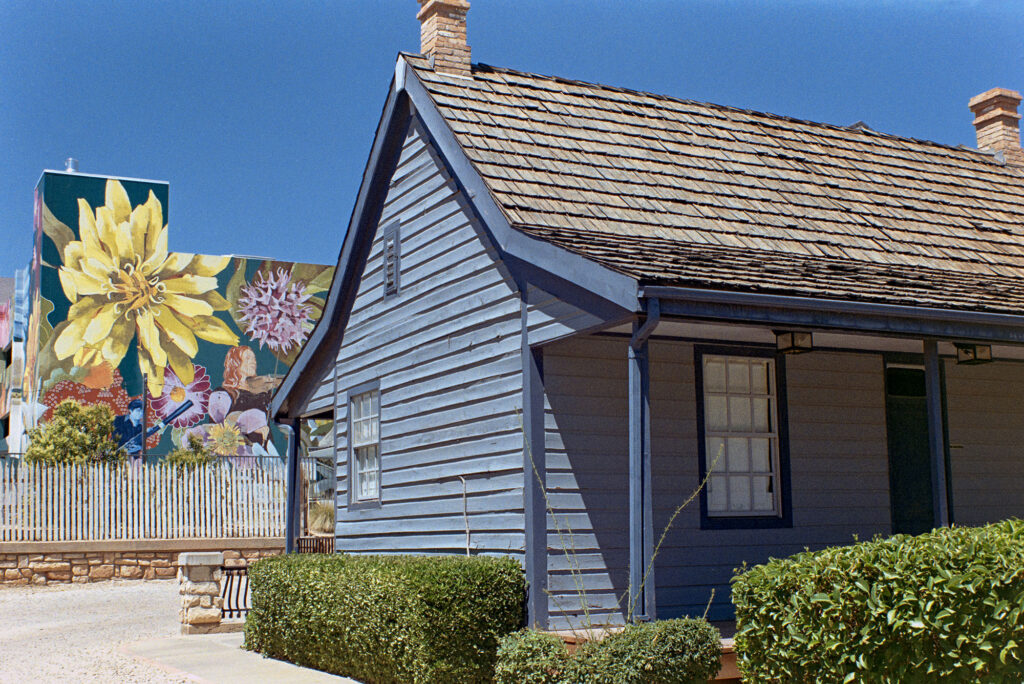
The shutter was also held to higher standards of longevity, rated at 100,000 actuations. Pentaprism design evolved as well, resulting in a large, bright viewfinder. Ribbons holding the cloth curtains were replaced with strings. There is no wasted space inside. The net result of multiple innovations was a camera that was smaller, quieter, and more smooth in operation than its competition.
While not quite as modular as the Nikon system, it is still quite adaptable and capable. Some professionals adopted the system, but I don’t feel that it ever reached its real potential in the professional market.

If switching from another system, one will find the controls a bit different than that of the typical SLR. The shutter speed selector is a rotating ring around the lens mount, a feature shared by the Nikkormat series. The film speed dial is located where one would normally find the shutter speed dial on other cameras. It takes a little time to adapt, but it is not obtrusive. In fact, I find it a little more convenient to have both the shutter speed and the aperture controls so close to each other.

Another interesting feature is the removable hot shoe. When not using on-camera flash, the prominent hot shoe can simply be removed with a small thumbwheel. I have found that the plastic housing of these hot shoes to be weak and prone to breakage. Perhaps the age of the plastic has something to do with that.
Damage will occur to most cameras when dropped on their pentaprisms, so I really can’t be too critical. At least the hot shoe can easily be replaced. The hot shoes are numbered, based on which camera they fit.

The OM-1 has a mechanical shutter and an electronic meter. There are no automatic modes, and the range of shutter speeds and other features are pretty typical to the era. Shutter speeds range from 1 second to 1/1000, plus a bulb setting for longer exposures. Film speeds are modest by today’s standards, from ASA 25 to 1600. Consider for a moment that in that era, film speeds were lower, with Kodachrome 25 and 64 being popular color slide films. Kodak’s Panatomic X (ASA 32) and Plus-X (ASA 125) were hot in the monochrome market. Tri-X was considered a high-speed film at ASA 320 and 400.

Originally named the M-1, pressure from Leica resulted in a name change after only 52,000 units were made. Upgrades to the OM-1 included the OM-1MD in 1974. A new “MD” badge appeared on the front and signified that a motor drive could be attached without any modification. In 1979 the OM-1n was released with some design modifications to the advance lever and some automation in the flash system. That is the model discussed here.

I have thoroughly enjoyed the OM-1. The viewfinder seems disproportionately large and bright for such a small camera (this is a compliment). This is a design feature of all the Olympus SLRs I have used, and it was absolutely intentional. It really does improve the overall experience. It is also light but solid, inspiring confidence that it is a quality instrument. All controls reward the user with positive clicks and pleasant haptic feedback.
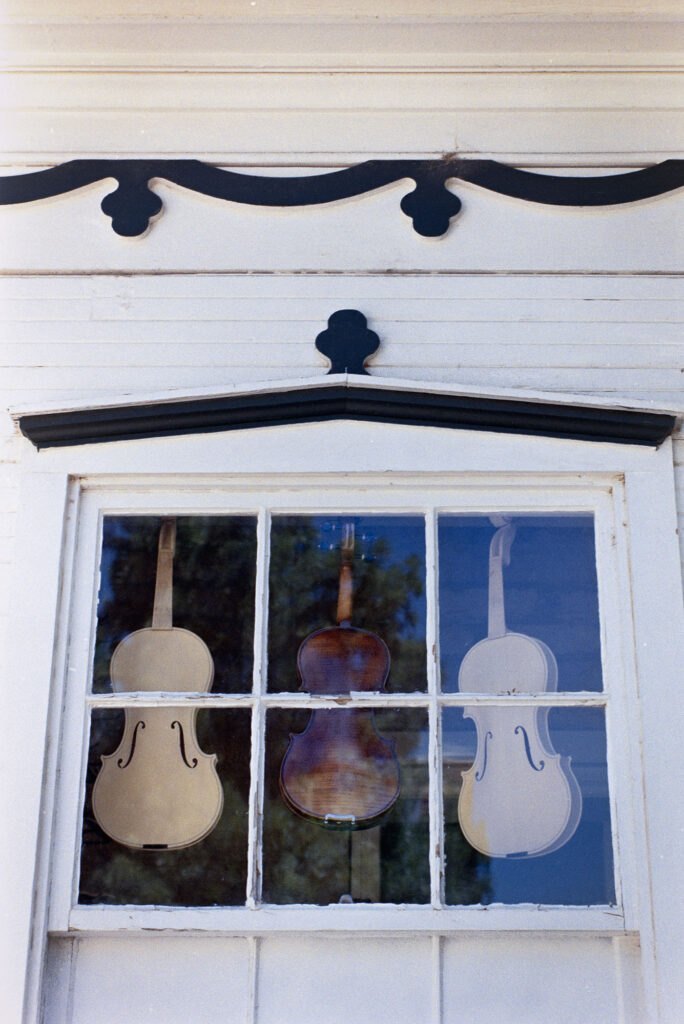
A camera body’s contributions to actual image quality are pretty limited. As long as it holds the film flat, lets in the right amount of light, and moves the film when told to, it is doing its job. That said, the overall experience of making the photograph is heavily influenced by the body design. Maitani’s team seems to have understood that. There is a certain elegant simplicity in its design.

Image quality is much more affected by the lens. Lenses in the OM system have impressed me thus far. Aside from the 50mm f1.4 and 55mm f1.2, none of the lenses I have for this system would be considered particularly professional or exotic.
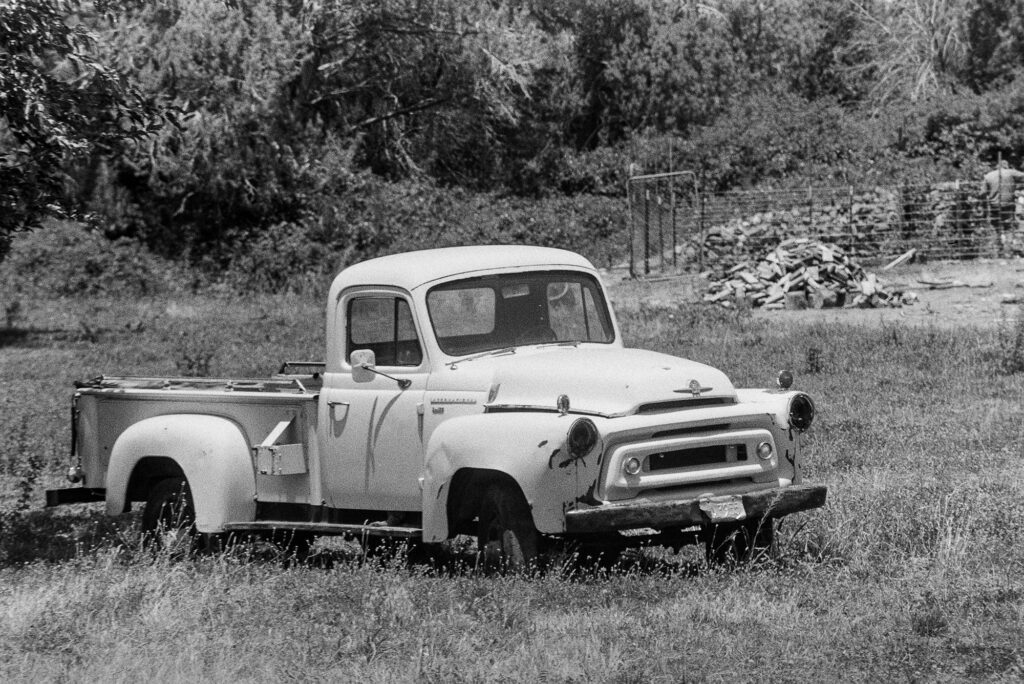
Regardless, they all seem very capable. Even the ubiquitous yet humble 50mm f1.8 is impressive in both its build quality and image-making capability. Other prime and zoom lenses I have collected over the last few years have been more than adequate. Put in proper context, they were excellent in the film era, in which they were designed and used.
Of course they can’t compete with modern lenses designed by supercomputers, used on digital cameras with baked-in lens profiles and image optimization software. We shouldn’t expect them to. I simply enjoy them for what they are, and they are simply marvelous considering how and when they were designed and manufactured.

Between the enjoyment of handling the camera and the image quality offered by the lenses, the OM system has won my admiration. The OM-1 started something wonderful and earned its place of honor in the evolution of photographic design.
Specs:
Introduced: 1972 (OM-1MD: 1974, OM-1n: 1979)
Manufactured: Japan
Lens Mount: Olympus OM
Weight: 511g (18oz)
Shutter: Horizontal cloth focal plane, mechanical timing
Shutter Speed range: 1-1/1000 second plus bulb
Flash Sync: 1/60 second
ASA range: 25-1600
Hot shoe: Yes, removable
Meter: CdS center-weighted TTL
Modes: Metered manual
Battery: Discontinued PX625 mercury, workarounds available
Self-Timer: Yes
DOF Preview: Yes
Mirror lockup: Yes
Multiple exposures: No


